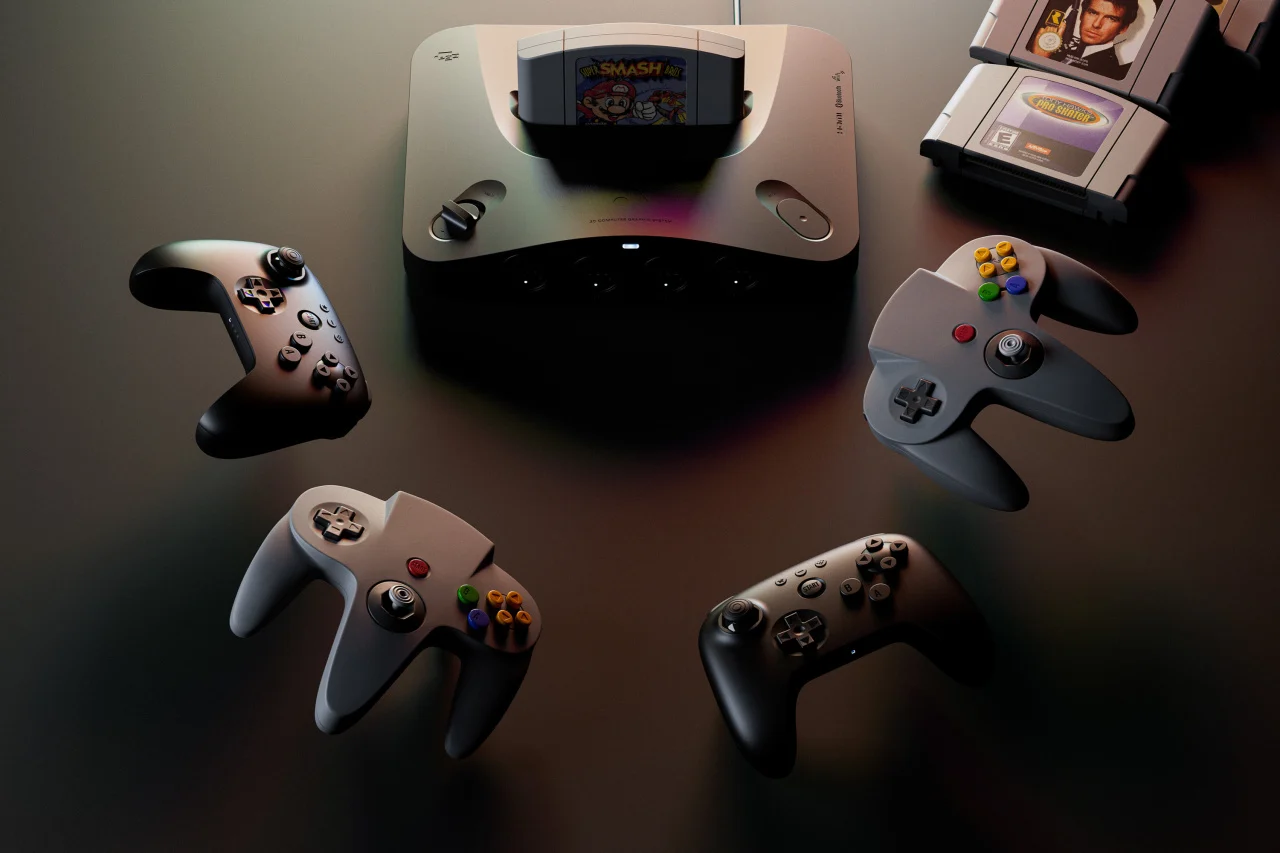I’m still very curious what consumer segment ends up picking this up. It’s $250, and I would assume you can just get an actually N64 for like $30, no?
I believe it’s probably slightly more for a used N64 in good condition, but your point is valid. I actually bought an Analogue Pocket. It’s a quality product, no question about it. I guess the appeal for that one for me is that you can get adapter to play whatever handheld cartridges in one system and the screen is way better quality than the original systems. An N64 though, I’m not as certain. These typically have an SD card slot so that you can run roms on them, but if you just want an emulation machine, there are far more cost effective options. I’d probably argue that the N64 model makes the least sense because the console was pretty reliable and didn’t have the read issues like the standard front loader NES.
Emulators can’t always play every game. I know Pokémon Snap has always struggled to run.
This is identical to real hardware and upscales everything to 4K. Not to mention native support for Bluetooth controllers and other creature comforts.
Getting an N64 + a RetroTink to upscale costs the same or more than this Analogue product (depends a lot on the N64 and RetroTink you buy). This is actually a fairly good value. I’m shocked Analogue priced it where it is considering that the Pocket is FOMO-sold and pricey.
Yeah, I was fully expecting this thing to be like $400.
The real question is if you’ll be able to purchase one of the 17 they’ve produced or if you’ll have to wait for their limited edition translucent version in a year.
Omg I would love translucent
That’s a really good point. Software emulation is fine for most people, but Analogue stuff is going to be as close to the original as possible plus having all those modern things that we expect now. I haven’t emulated N64 stuff very much so maybe there’s more complications than I was thinking.
A quick search on EBay shows some results for $100. That’s also relying on the console to be in decent shape besides being heavily used, and you have to deal with getting a video adapter, which is like $20 for a cheap one or $100 for one with fancy features that makes it look nicer.
$250 for a brand new product supporting modern features like HDMI, USB, and Bluetooth sounds reasonable. It’s got a built-in video filter system like the fancier adapters, and if it’s anything like their previous products,
it will have support for mimicking other consoles of similar compute power (the original PlayStation 1 potentially?)I checked and their website says it won’t support this feature. However, it does mention it has support for the Expansion Pack, which is another ~$70 although it’s only needed for a handful of games.Their previous products have sold quite well, so there’s that.
I got a used, working N64 maybe 11 years ago, and I had to pay $40. Maybe you can get it for less, but I sincerely doubt it. The decent, working ones only tend to become more rare with time, and what was $40 11 years ago…certainly…isn’t the same as $40 today. 🙄🙄🙄🙄
My friend went to a nerd convention & IIRC there were people selling “reconditioned” N64s for $130, more for exotic & limited edition colors. While expensive I think this is actually the way to go, because the nerds take them apart & give them a great cleaning, to where they’re basically like new! My friend bought one for his kids.
Then for a little more money, there’s new tech in this one. Crazy upscaling, modern connections, fixes to old problems in the original console. I have such fond memories of the N64, but I also remember sometimes when it was trying to render some very intense Super Smash Bros scenes it would struggle & lag out for a while. This should be fixed. 10x the resolution, but in keeping with the spirit of N64! And with the original N64, you have to find, buy hokey low-storage memory cards & such. This one has a microSD expansion port & modern 8BitDo Bluetooth controllers, ALL the bells & whistles.
…so… this appeals to millennials who want to experience their childhood on crack, just the best of what is old rendered & reimagined on snappy modern tech by people who care so much about retro gaming. To get together with their friends. To share with their children. Idk I think it has more than a little appeal, to the right person!
The lag of some games will be reproduced faithfully on this, intentionally. It’s functionally an n64 clone that can upscale.
I’m still very curious what consumer segment ends up picking this up. It’s $250, and I would assume you can just get an actually N64 for like $30, no?
Sure, but you’re not factoring in all of the price factors that come associated with playing that on a new TV or complicated AV system. This comes with HDMI output built in, and will have scalers and other amenities for QoL usage in 2024. The sad truth is that it’s actually pretty expensive to have an AV setup that is designed to handle old consoles, especially with how TVs have not properly supported lower-res content for a long time.
Fact of the matter is some of the best scalers with low latency that you can buy are nearly $2k US, and even the cheaper or more budget options are more expensive than the $250 price tag that this targets (the OSSC, for example). I wish this wasn’t the case, but the Analogue 3D and equivalent reimplementations are actually super important for people who are still interested on playing the closest to “real hardware” in 2024.
Again, the comparison or value to the specific group isn’t what’s factoring in to my question. To HOW MANY people they can sell this to and make it worth it in the end for the company is whay I’m curious about. Even globally, I don’t imagine there are THAT many people with a physical collection of N64 games that don’t already have the console and are otherwise looking to replace it. Thats why I’m saying the crowd to market to must be incredibly specific.
This Analogue group is very specialized in high-end, non-emulated resurrections of old consoles. They’re known for their passion & product quality, and also a shitty website UI. In my opinion. It sucks. Can’t be good at everything, I guess, and you struggling on their website isn’t their problem.
So as you noted, they’re charging enough for their product…and quite often when they do a limited run release (especially on a brand new console), they sell out within minutes. Sometimes they’ll do a restock, much later, if they feel like it.
I also don’t want to get anyone in trouble, buuuuuut it is heavily implied that while their hardware doesn’t involve emulation of any kind, there may or may not be physical cartridge emulators that can run ROMs of all kinds of games. Legal & not so legal. ¯\_(ツ)_/¯
It’s going to support more systems, eventually, unofficially. Analogue Pocket takes in Gameboy carts (and some other systems with official adapters) but there are also plenty of community cores, some brand new, some ported from Mister. Unfortunately those Pocket ones won’t be compatible :/
If it was a hardware platform with existing support for other emulators, I’d say it still may be useful. All I’m seeing is an expensive piece of specialized hardware that retails with a single use. Because its FPGA, of course it can be reprogrammed to do whatever on the fly, but why go this route when you already have plenty of x86 or ARM software out there that already does that.
It just seems SUPER specific and singularly focused with no added benefits for the price tag is all.
FPGA is cycle accurate which requires very powerful hardware if you wanted to do it with software emulation, especially when you get to 5th gen consoles. It’s for the people that want an „end-game” setup that’s as good as original hardware, can handle multiple systems and give you much more flexibility. It doesn’t cost all that much when you compare it to original hardware, mods and scalers it would require to connect to new displays. I’m actually very surprised how cheap A64 is, expected at least twice as much.
But, if you’re not that type of crazy then playing on your own PC, Ambernic and similar stuff is good enough and super convenient.
Cycle accurate just means the FPGA runs the same cycles as the reference hardware of whatever it’s programmed to be doing. In this case, an N64.
But the point of software emulation is to skip all of that noise and be more portable in the first place. The only real reason I can think to go with FPGA in this case is 1) to sidestep lawsuits, and 2) to possibly expand functionality in the future.
It might seem like an overkill but cycle accurate emulation is in many ways easier, just way less performant. Back in the day devs wrote software in a way that would leverage different timings between different pieces of hardware to achieve things that wouldn’t be possible otherwise like full screen parallax scrolling on Gameboy. Software emulators have to identify those cases and implement workarounds for them. Some edge cases are unresolved for years leading to bugs of varying severity. You can see a rundown of such cases on Analogue Pocket in this video.
Depends but a nice condition N64 with the cables and expansion pak is probably about $100 without a controller. If you plan on connecting it to a modern TV, you need a decent scaler that can do Svideo/composite, so another $60 for the RAD2X. You even can complicate it more by throwing in cheaper RGB mods if you have a compatible system but that adds probably around $60 if you can’t do it yourself.
Their price point is very competitive, especially considering its plug and play.
The emotional part of my brain is telling me to buy this ASAP, because the N64 was such a formative part of my adolescence.
The logical part of my brain is reminding me of all my other nostalgia-fueled purchases that subsequently failed to spark the joy of youth.
I have bought so many Analogue products and yet I am still a 40 something dad who struggles to get excited about any formerly favorite hobby.
Was much as I love the accuracy when they no longer use original chipsets you can just get a mister and a shell off Ali







